Becoming Enemies
Becoming Enemies
U.S.-Iran Relations and the Iran-Iraq War, 19791988
James G. Blight, janet M. Lang, Hussein Banai, Malcolm Byrne, and John Tirman
Foreword by Bruce Riedel
ROWMAN & LITTLEFIELD PUBLISHERS, INC.
Lanham Boulder New York Toronto Plymouth, UK
Published by Rowman & Littlefield Publishers, Inc.
A wholly owned subsidiary of The Rowman & Littlefield Publishing Group, Inc.
4501 Forbes Boulevard, Suite 200, Lanham, Maryland 20706
www.rowman.com
10 Thornbury Road, Plymouth PL6 7PP, United Kingdom
Copyright 2012 by Rowman & Littlefield Publishers, Inc.
All rights reserved . No part of this book may be reproduced in any form or by any electronic or mechanical means, including information storage and retrieval systems, without written permission from the publisher, except by a reviewer who may quote passages in a review.
Jacket Artwork: Chang Dai
Jacket Design: Neil D. Cotterill
Artwork in the book: Chang Dai
British Library Cataloguing in Publication Information Available
Library of Congress Cataloging-in-Publication Data
Becoming enemies : U.S.-Iran relations and the Iran-Iraq War, 19791988 / James G. Blight... [et al.] ; foreword by Bruce Riedel.
p. cm.
Includes bibliographical references and index.
ISBN 978-1-4422-0830-8 (cloth : alk. paper) ISBN 978-1-4422-0832-2 (ebook)
1. United StatesForeign relationsIran. 2. IranForeign relationsUnited States. 3. Iran-Iraq War, 19801988United States. 4. Iran-Iraq War, 19801988Diplomatic history. I. Blight, James G.
E183.8.I55B423 2012
327.73055dc23 2012006769
 The paper used in this publication meets the minimum requirements of American National Standard for Information SciencesPermanence of Paper for Printed Library Materials, ANSI/NISO Z39.48-1992.
The paper used in this publication meets the minimum requirements of American National Standard for Information SciencesPermanence of Paper for Printed Library Materials, ANSI/NISO Z39.48-1992.
Printed in the United States of America
To Tom Blanton
Friend, collaborator, and chair extraordinaire
Between us and them ...
Stands the great wound swallowing all tears, all voices.
Transfixed or transformed by this pain? We never know because
Who can slip through the gate without throwing a shadow
Toward both the past and the presentfire, flood, famine
All weve wished upon them a thousand times, still they inch
Back and taunt us with their persistence. We track them down
To a quick end. More come. And the old memories grow new.
The future seems already written by a pen of iron. The book
Unreadable, immense. The enemy has become our masterpiece.
J. P. White, Thinking about the enemy (2002)
Foreword
The Iran-Iraq War was devastatingone of the largest and longest conventional interstate wars since the Korean conflict ended in 1953. A half million lives were lost, perhaps another million were injured, and the economic cost was over a trillion dollars. An index of the scale of the tragedy is that the battle lines at the end of the war were almost exactly where they were at the beginning of hostilities. It was also the only war in modern times in which chemical weapons were used on a massive scale. The 19801988 war led, in addition, to other disasters. It led to the Iraqi invasion of Kuwait in 1990, the liberation of Kuwait a year later, and the U.S. invasion of Iraq in 2003. The bloody U.S. war in Iraq was the finale in this march of folly. The seeds of multigenerational tragedy were planted in the Iran-Iraq War. We will live with its consequences for decades, perhaps longer.
Both Iraqis and Iranians came to believe the United States was manipulating them during the war. Ironically (and perhaps naively), the United States tried to reach out to both belligerents during the course of the warin great secrecy both timesto try to build a strategic partnership. The disastrous arms-for-hostages policy, which came to be known as Iran-Contra, convinced Iraqis that the United States was trying to play both sides of the conflict. The result was that when the war ended, the Iraqi regime and most Iraqis regarded the United States as a threat, despite Washingtons support during the war: critical intelligence support to Baghdad, considerable diplomatic cover, and ignoring the largesse of our Arab allies who loaned tens of billions of dollars to Baghdad to sustain Iraqs war effort.
Iranians call the war the imposed war because they believe the United States imposed it on them and orchestrated the global tilt toward Iraq in the war. They note that the UN did not condemn Iraq for starting the warin fact, it did not even discuss the war for weeks after it started, and it eventually blamed Iraq as the aggressor only years later as part of a deal to free U.S. hostages held by pro-Iranian terrorists in Lebanon.
For Iranians, though the war had tragic consequences, they nevertheless consolidated their revolution largely by successfully portraying it as a David and Goliath struggle, imposed on Iran by the United States and its allies. The Islamic Revolution of 1979 was fairly short in duration and its cost miniscule in comparison to the Iran-Iraq War. For the generation of Iranians who are now leading their country, men like President Mahmoud Ahmadinejad and Supreme Leader Ali Khamenei, the war was the defining event of their lives, and it has shaped their worldview. Their anti-Americanism and deep suspicion of the West generally can be traced directly to their understanding of the Iran-Iraq War.
For Iraqis it was also a national nightmare, though just the beginning of a dark period that would culminate in the bloody civil war that followed the U.S. invasion and the destruction of the regime of Saddam Hussein. Many of Iraqs fault lines were exposed during the Iran-Iraq Warespecially Arab versus Kurd, and Shia versus Sunni. Violent eruptions along these fault lines occurred after 2003 and continue to the present day.
In spite of its critical significance to two of the principal players in the Middle East, the bloody war in and around the Persian Gulf has attracted relatively little attention in the United States. The 1979 revolution and the Kuwait crisis in 19901991 have gotten far more attention from academia and think tanks than the eight-year struggle between Iran and Iraq. U.S. policy toward the war has gotten even less attention. One reason Americans have largely ignored the Iran-Iraq War is the enormous antipathy many Americans feel toward the two belligerents. Neither Iran nor Iraq is popular in the United States, to say the least. When Americans think of Iraq, they think mainly of Saddam Hussein and the huge (and still ongoing) cost of the U.S. intervention that began in March 2003. When Americans think at all about Iran in the 1980s, they are likely to recall the Iran-Contra scandal, a peculiar and humiliating cascade of revelations that nearly led to the impeachment of President Ronald Reagan. Yet another reason Americans give short shrift to the Iran-Iraq War is that most of the critical U.S. decisions regarding the war were made in secret, and the relevant documentation has remained classified. For example, the U.S. provision of critical intelligence to Baghdada story told in this book with a degree of authoritative detail previously unavailablewas never discussed in the open during the war. Finally, it should be noted that the two most important American decision makers on matters connected to the war, President Ronald Reagan and his CIA director, William Casey, died without leaving their own personal accounts of why they did what they did.
Now comes this book, with its remarkable declassified documentation and oral testimony that bear directly on questions of U.S. policy making with regard to the Iran-Iraq War. Using the method of critical oral history, a collection of scholars and former officials involved with U.S. and UN policy toward the war met at the Musgrove Conference Center in St. Simons Island, Georgia, in December 2008 to take a fresh look at the U.S. role in the war. The bulk of this book is the edited and annotated transcript of that conference. The book reveals much that was previously unknown about U.S. policy before, during, and after the war. But it goes beyond mere reportage; it also contains lessons proposed by scholars and former officials regarding fundamental foreign policy challenges to the United States that transcend time and place.

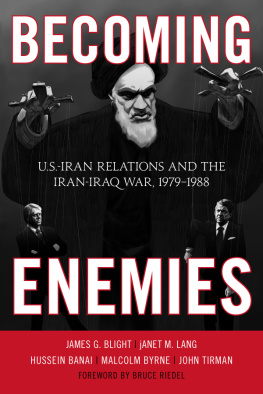

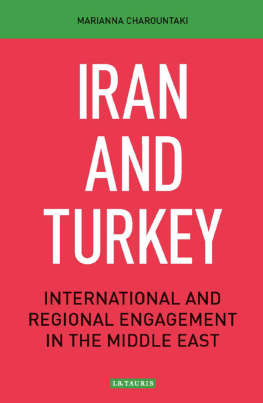
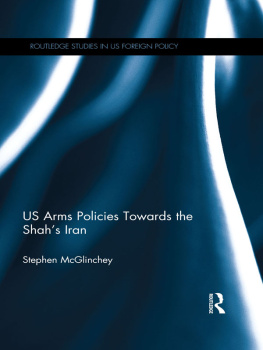

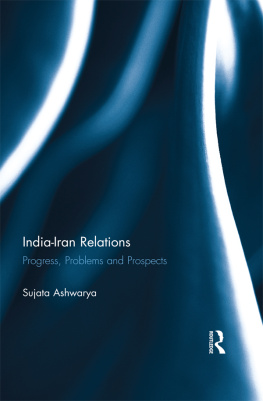
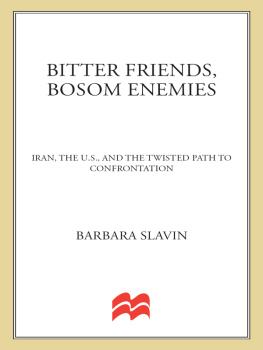


 The paper used in this publication meets the minimum requirements of American National Standard for Information SciencesPermanence of Paper for Printed Library Materials, ANSI/NISO Z39.48-1992.
The paper used in this publication meets the minimum requirements of American National Standard for Information SciencesPermanence of Paper for Printed Library Materials, ANSI/NISO Z39.48-1992.